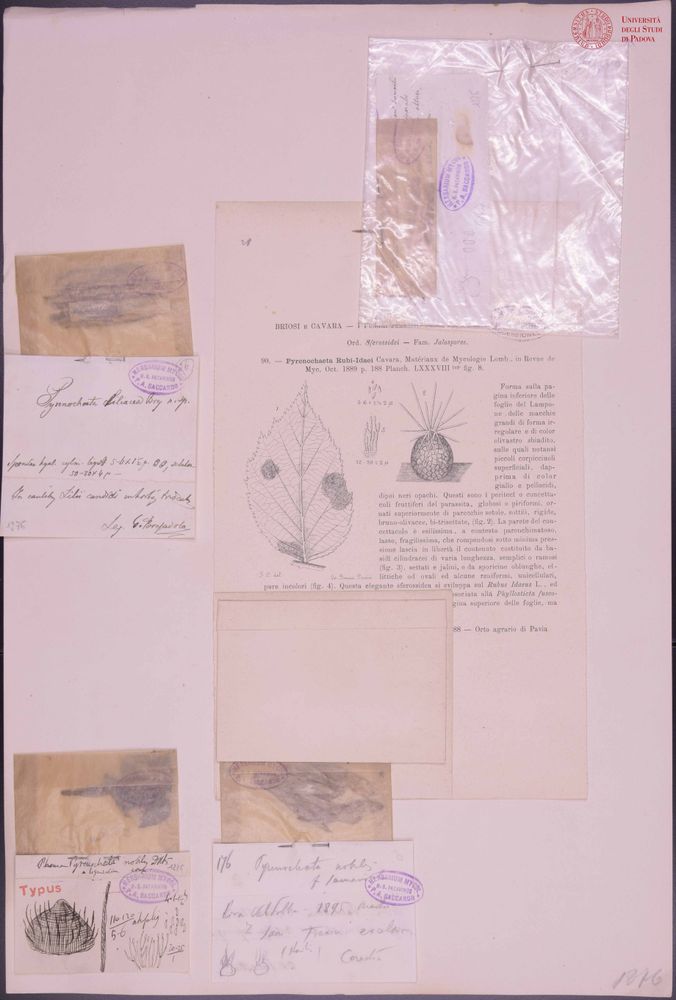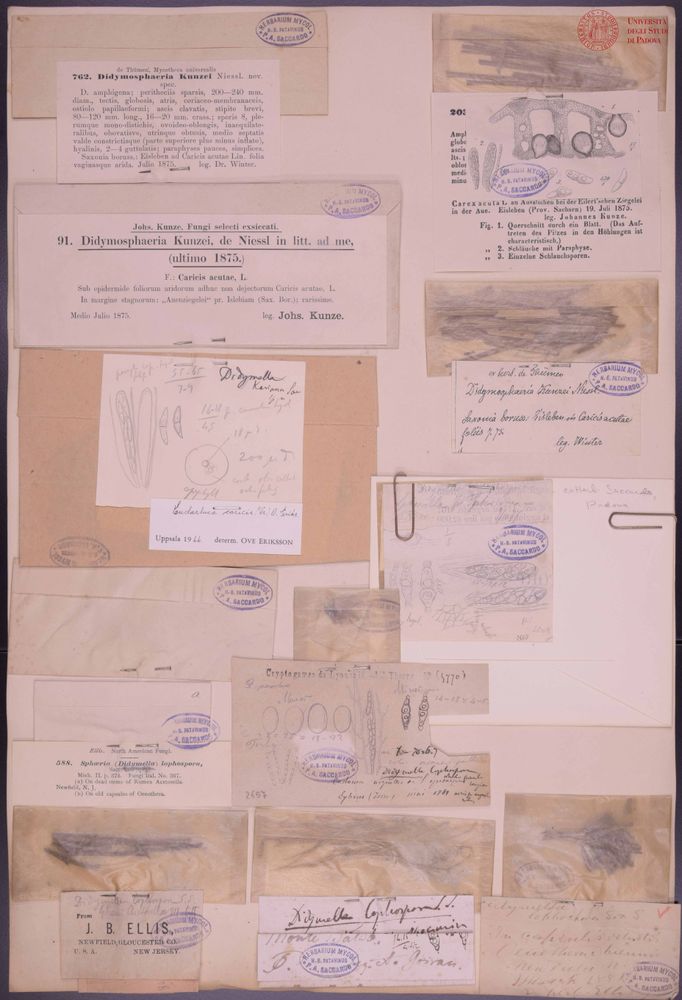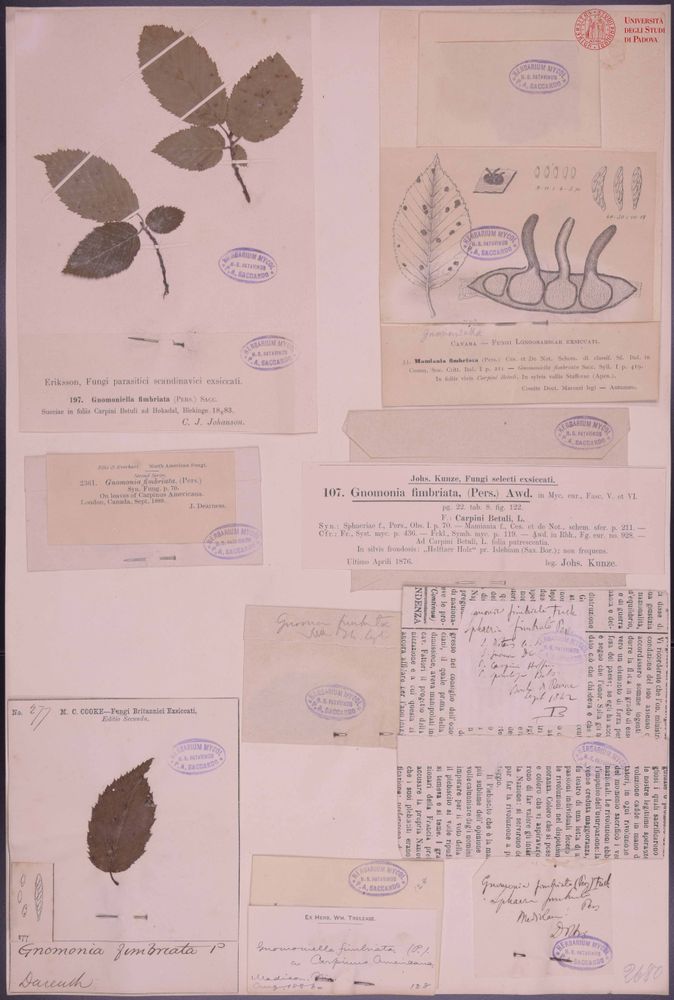Pier Andrea Saccardo (1845-1920) was botanical assistant to Roberto De Visiani, Prefect of the Botanical Garden, and succeeded him in the office. Fascinated by plants as a boy, he began to take an interest in fungi during the early 1870s. For the next forty years, mycology, and especially certain groups of fungi — mycromycetes — became the main focus of his research. With the criteria for a classification of fungi established, he set to work on his most important opus, the Sylloge fungorum, twenty-two volumes that brought the number of known species of fungi in the world to around 72,000. The fundamental element of this monumental work, written together with a number of helpers, including his son Domenico, is his collection: started around 1874, it features specimens found in the provinces of Treviso and Padua, along with others sent by colleagues and friends from all over Italy and abroad. Left to the Museum on Saccardo’s death, it is a collection consisting of some 69,000 specimens, mainly inserted in envelopes pinned to sheets. More than 18,500 species are catalogued, some of which now synonymized, and more than 4,000 types, making this mycotheque an especially important point of reference for scholars around the globe.
- Insights

Discover a remarkable atlas of plant biodiversity covering 3,500 plant species from around the world, visit the Botanical Museum, which tells how studies have evolved and traces the links between botany and medicine, explore the Renaissance medicinal herb garden, and find out all about Goethe’s Palm.
- Visit

The Botanical Garden of Padua lies between the Prato della Valle city square and the Basilica of St Anthony. It was named a UNESCO world heritage site in 1997. Visits can be by guided tour or self-organized, in which case the admission price includes an audio guide, with a version for children too — ‘AudioPen Kids’.
- Events and activities

A Botanical Garden to explore and experience. Besides being the venue for a spring festival, Risvegli, dedicated to science and nature, the garden hosts events and shows all year round, with exhibitions and activities that take the visitor on a trip through the world of plants.
- Research and collections

Research laboratories, the herbarium, the museum collections and the historical library are core elements of an activity that combines leading-edge research with the conservation of a rich historical and naturalistic heritage. A scientific mission begun in 1545 that continues today and every day.










